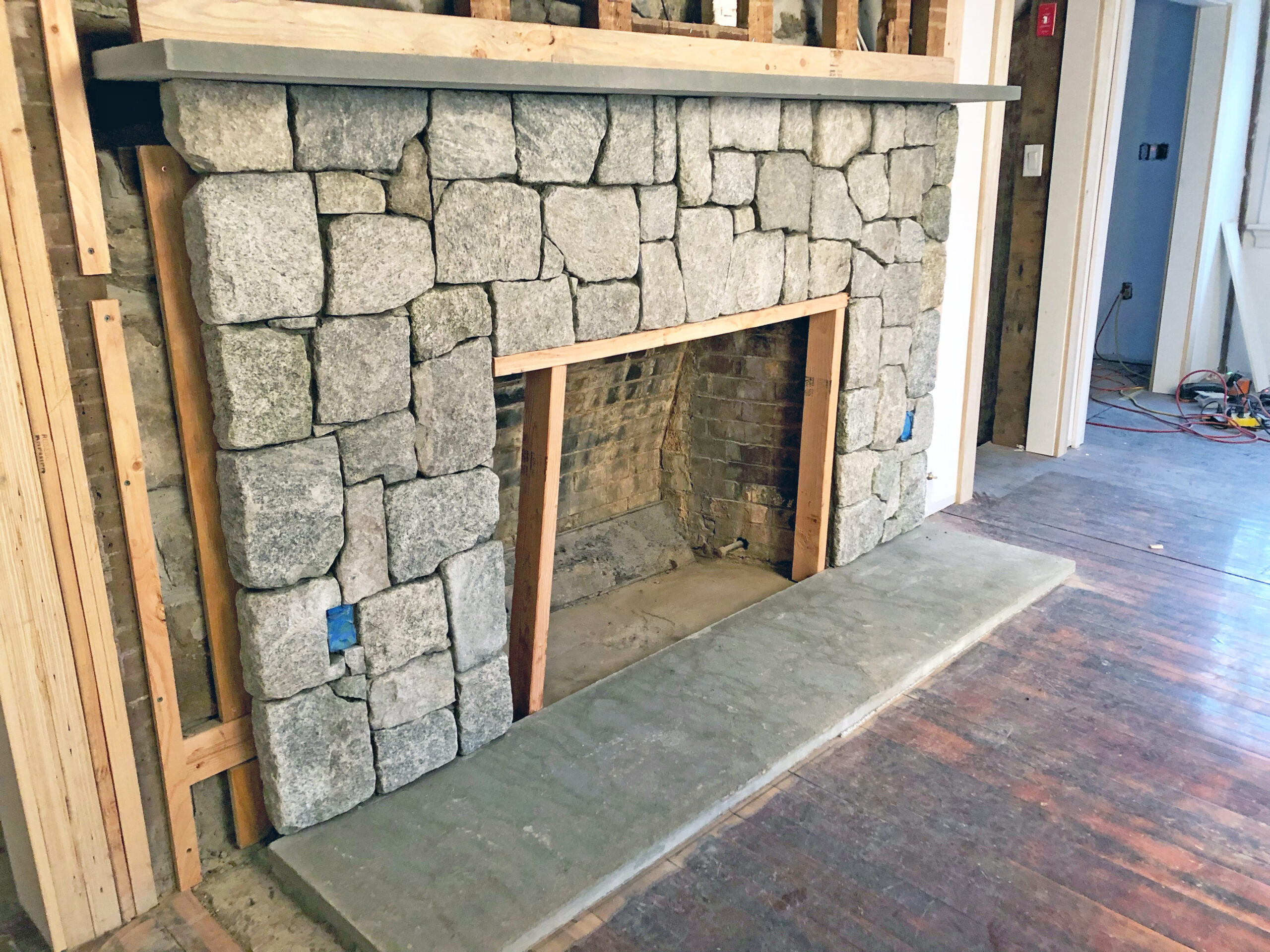Thin Stone Veneers Make a Fireplace Update Easy

If you’re thinking of updating your fireplace but are holding back because of the potential cost, time and mess of removing what you currently have, thin stone veneers may be the solution you’ve been looking for.
Thin stone veneers are cut natural stones that are mortared onto a fireplace to cover the existing material, such as brick or concrete, and give it the look of a natural, full-stone fireplace without the weight, expense and time spent building an entirely new stacked stone fireplace.
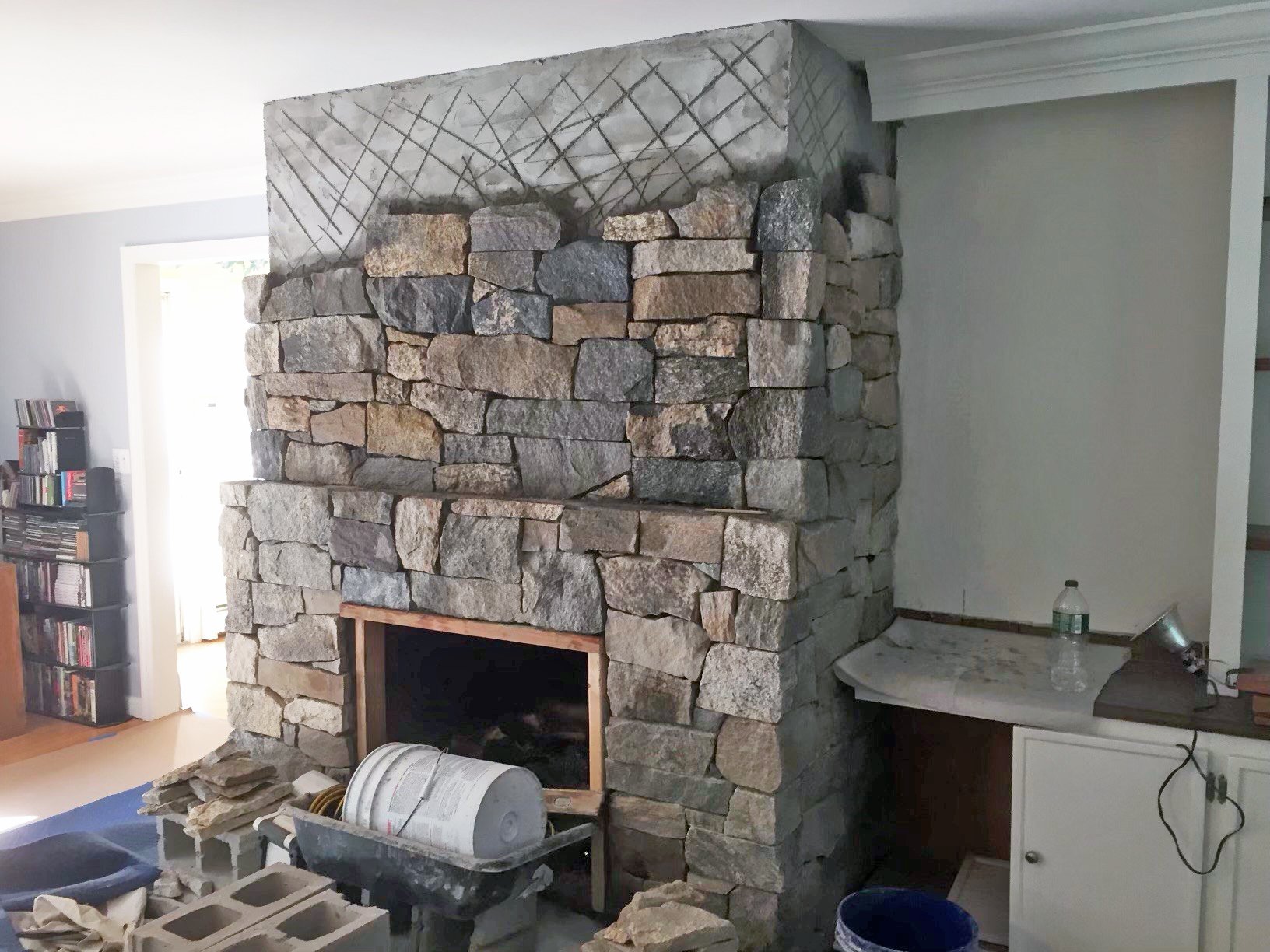
WHY CHOOSE THIN STONE VENEERS
According to Douglas Bennet, owner of Bennet General Contracting, LLC in Fairfield, Connecticut, “The number one reason people choose thin stone veneer is to update the interior of their house. Brick fireplaces just aren’t in style anymore. A lot of people just want to cover it up without doing a bunch of demo work, so it’s a great option.”
True stone veneers will give your fireplace the warmth and charm of natural stone. “You just can’t get that with the faux stone you get off the shelf from the big box stores,” says Bennet. Swenson Granite Works’ thin veneers provide the same look and low-maintenance durability of full bed stones with a much easier installation process.
HOW TO INSTALL
Bennet says, “If you’re moderately handy, you could install thin stone veneers yourself.” But be prepared. There is a little bit of puzzle-work to it. A professional can eyeball how the stones will fit together and has the tools to cut the stones to fill in any gaps.

“We put the stones in one by one,” says Bennet. “I can pretty much visualize what I want the end product to look like; I’ve been doing this for over 30 years. That just comes with experience. Typically, we lay them out in the work area and get an idea of the shapes and sizes and how they will fit nicely together, so there are no gaps. It’s just piece by piece.”
The products needed include:
- Stone veneers, typically ¾ to 1 ¼ inch thick
- Veneer stone mortar (Bennet likes to use Spec Mix)
- A diamond-cut blade (Bennet uses a wet saw and a 4-inch angle grinder)
When buying the stone, be sure to measure the corners and the center field. Corner stones are sold by the linear foot, so measure how many corner pieces you need and then how much center field you need for the center of the project. Center stones are sold by the square foot.
STEPS
Check that the existing fireplace is structurally sound since it will be holding additional weight from the stones. Tiles should be removed and there shouldn’t be any loose bricks. Clean any dust or soot from the surface.
Tile fireplaces will require a few additional steps:
- Remove existing tiles.
- Attach a wire lath over the sheetrock and screw it into the studs. This will help support the weight of the stones.
- Apply a skim coat of veneer mortar over the lath; this will be your scratch coat to put the stones onto.
For brick fireplaces:
- Check that bricks are secure and clean.
- Wet the brick slightly and apply a scratch coat of veneer stone mortar.
- When it is just about dry, scratch vertical and horizontal lines into the mortar. This gives the next coat something to grip onto.
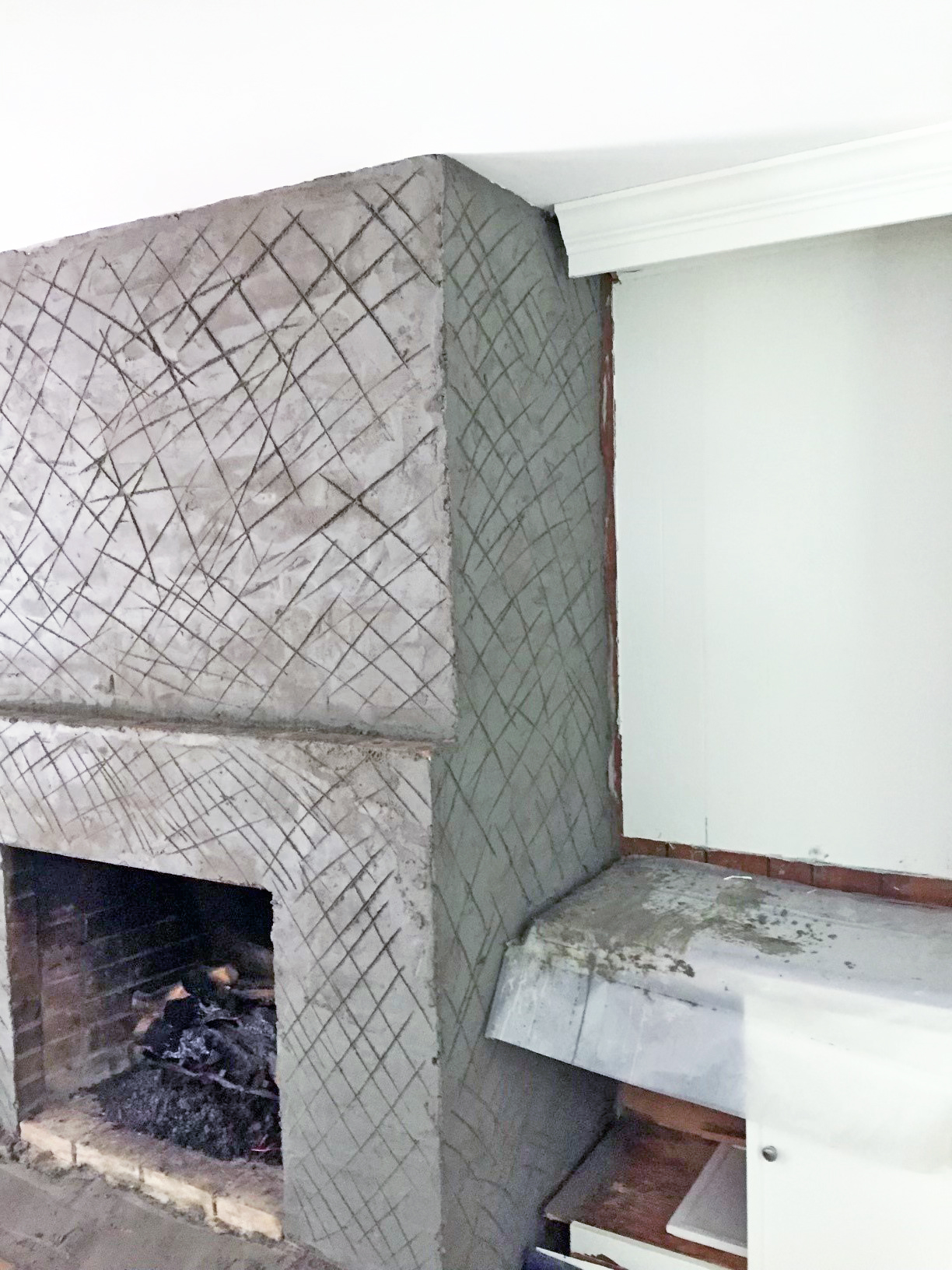
- Let dry overnight.
- Lay the stones out and see how they will fit together.
- Start at the bottom corner.
- Dampen the back of the stone and add a thin coat of veneer stone mortar.
- Put the stone against the wall and apply pressure while shifting stone left and right, up and down, ensuring maximum mortar coverage on the back of the stone. Tap with a rubber mallet to secure.
- Repeat with the following stones.
Stones on the sides and top typically will need to be cut to fit. Cut the stones before putting mortar on them.
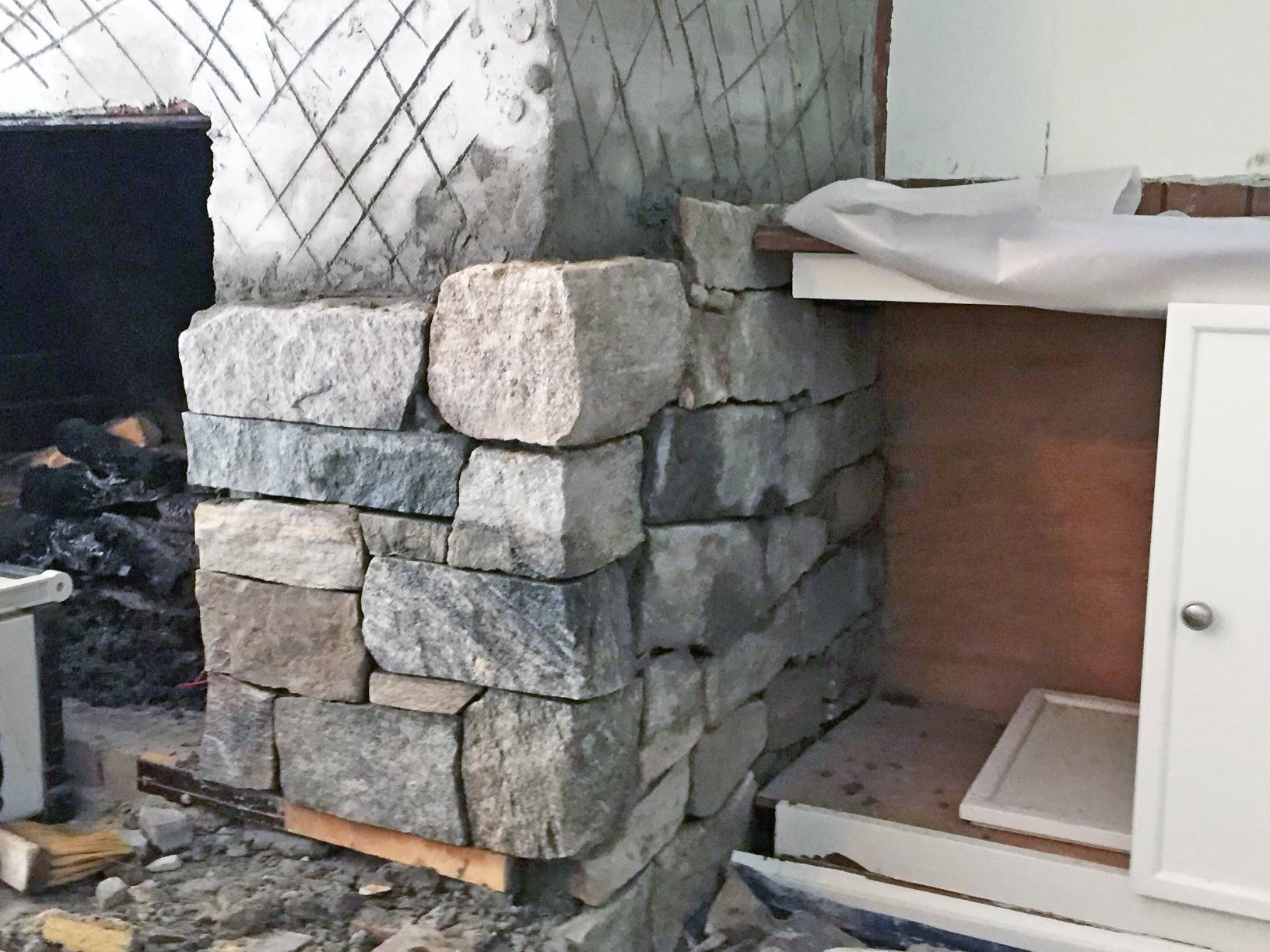
PROJECT EXAMPLES
Bennet recently worked on two fireplace projects using thin stone veneers from Swenson Granite Works.
Small Fireplace
Stone used: Boston Blend mosaic
House built: Early 1900s
The owner wanted to modernize the fireplace but keep a rustic feel to it. He wanted a more traditional look that would keep with the aesthetics of the era the house was built in. He also wanted to expand the fireplace from the small brick fireplace size.
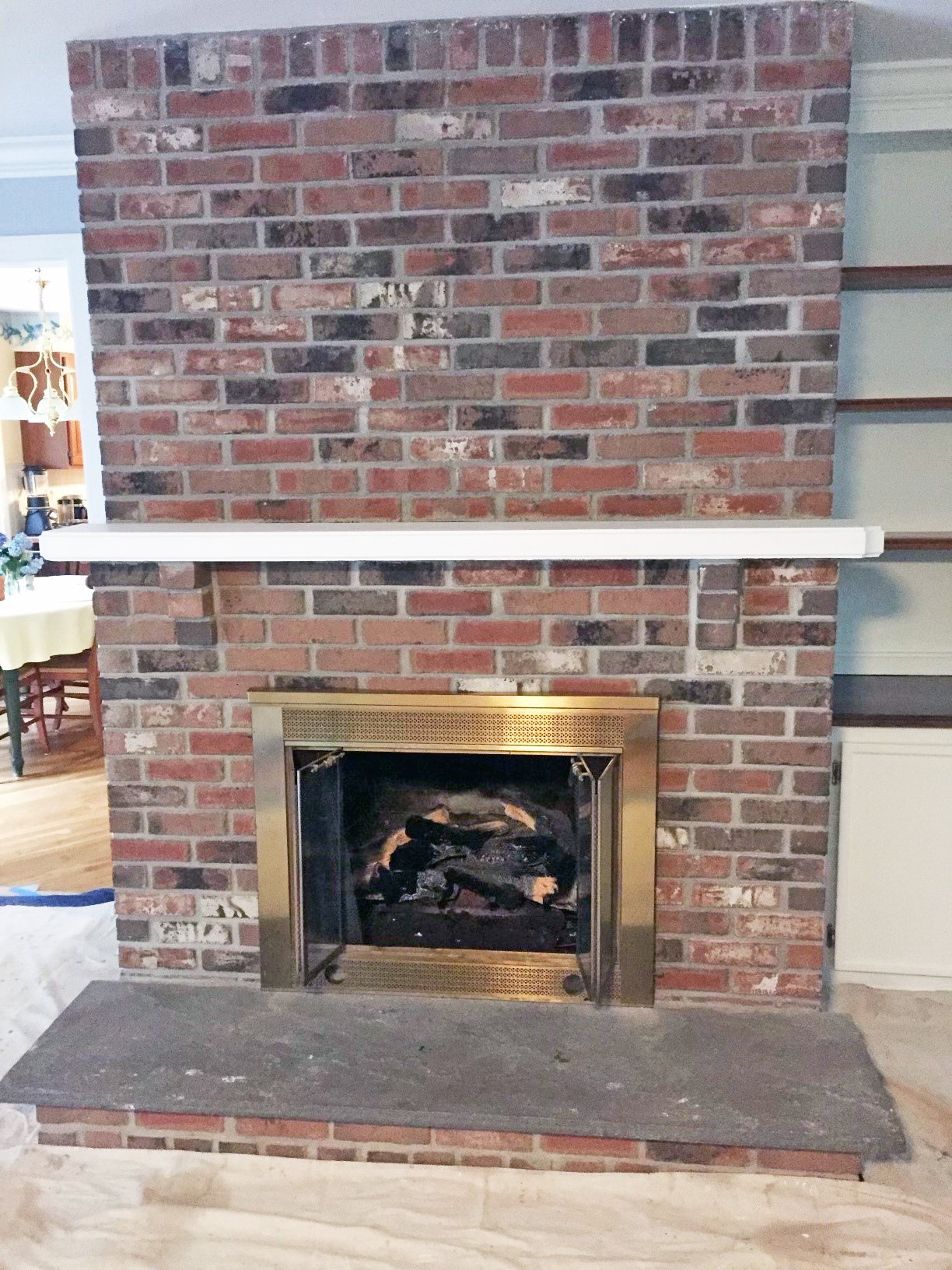
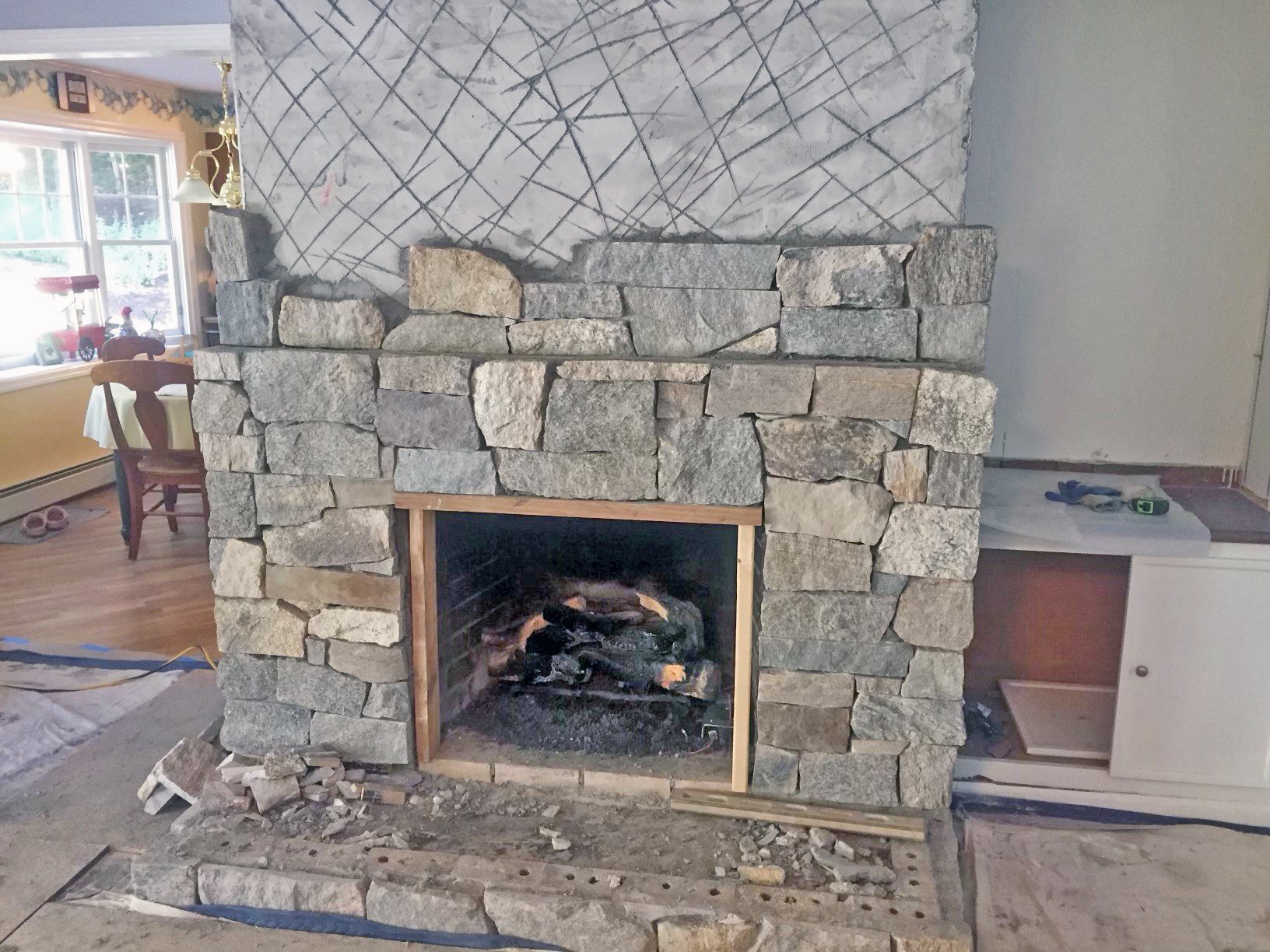
Installation
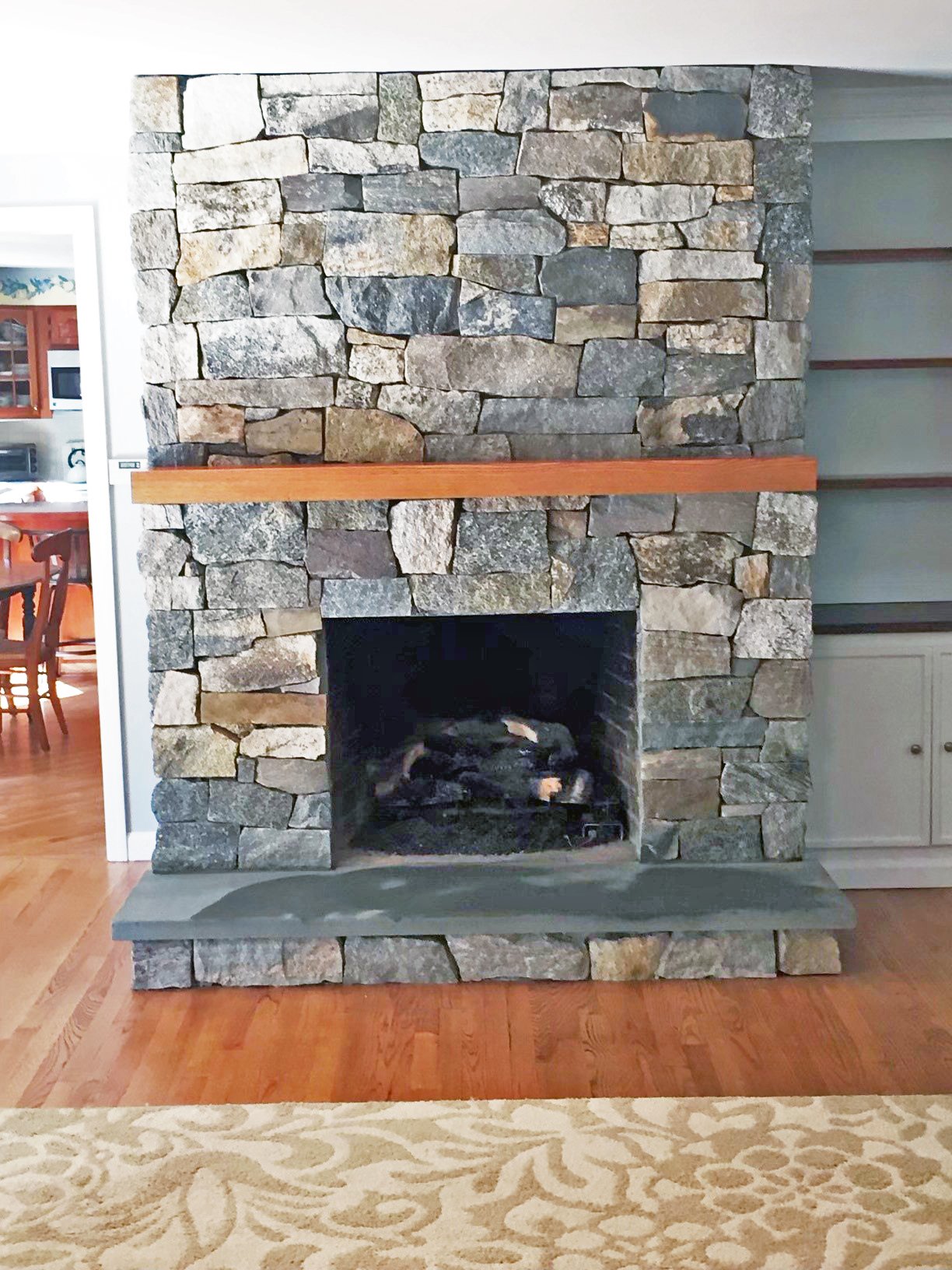
Large Fireplace
Stone used: Hispania mosaic blend
House built: 1970s
The brick fireplace was very dated, and the owner was tired of it. They use their fireplace often and wanted a warmer, natural stone look to modernize the space.

Before
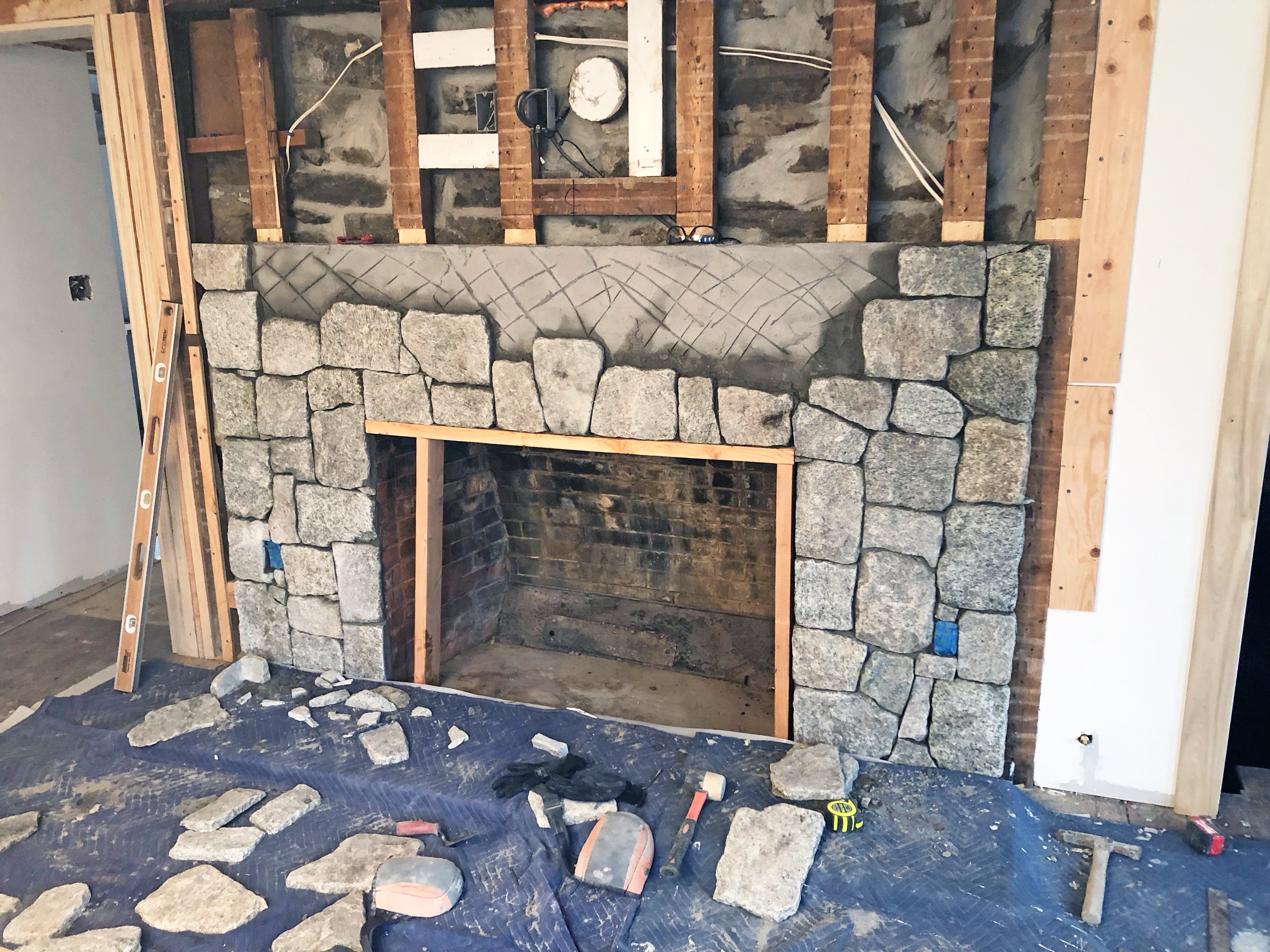
Installation
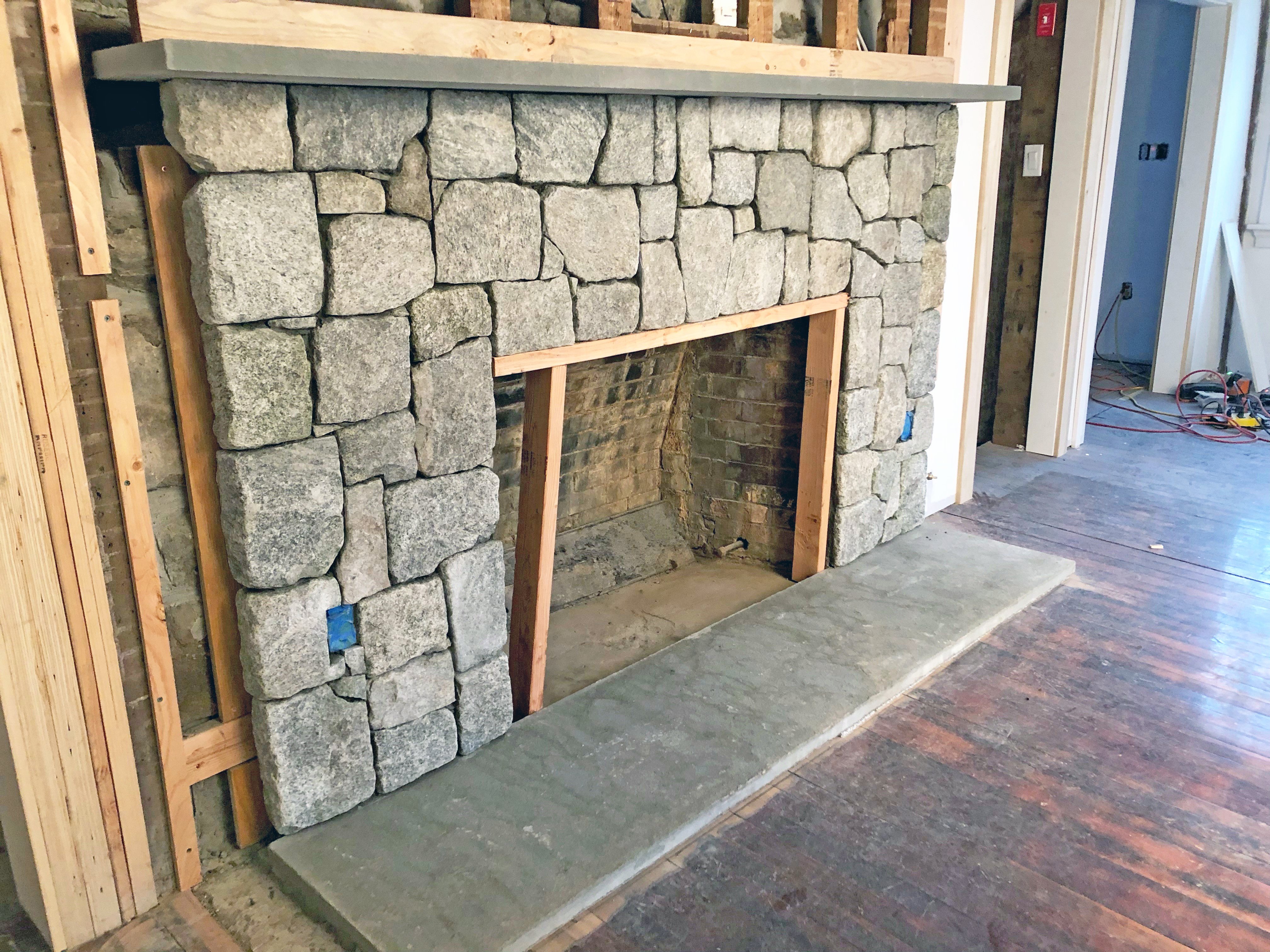
After
Bennet gets most of his supplies at Swenson Granite Works in Newtown, Connecticut. “I’ve been going there for 15-20 years,” he says. “They’re very knowledgeable. It’s welcoming to know that when I call, I have a personal relationship with them. I think they do a great job of treating every customer fairly and with the same professionalism, kindness, and knowledge. They’re really good guys.”
For more cost-effective and time saving solutions to updating the look of your existing fireplace, consider thin stone veneers. If you plan to DIY, Bennet advises that you make sure you do good prep work and plan everything out ahead of time. Otherwise, hire a professional contractor. Swenson Granite Works can help guide you every step of the way, from picking the right stone to finding a contractor in your area. Call or visit one of their nine retail stores across New England.
